I'm Boosted and Got Omicron—This Was My Worst Symptom by Far
While I had a mild case of COVID, one symptom was unbearable.
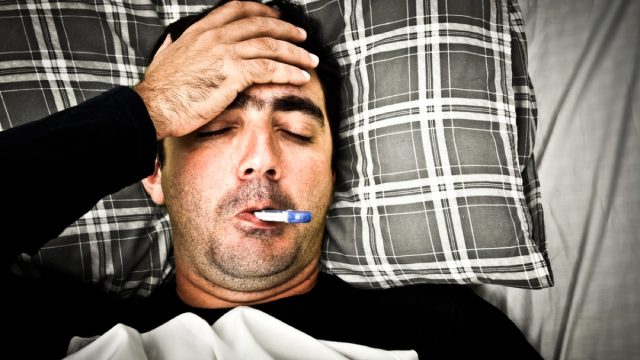
After nearly two years of avoiding a COVID infection—thanks in large part to being vaccinated, wearing a good mask, and not leaving the house much—I finally got it. There's nothing unique about my situation: The highly contagious Omicron variant brought numbers to new heights across the U.S., and New York got hit particularly hard. Because I'm fully vaccinated and boosted, I knew that I was very unlikely to have a severe case of COVID, but I was still surprised by the trajectory of my infection. In fact, there was one Omicron symptom in particular that was by far the worst I experienced, and it wasn't at all what I expected. Read on for my personal account of breakthrough COVID.
RELATED: If You're Vaccinated, These Are the Major Omicron Symptoms, Doctors Say.
My symptoms started with a cough.
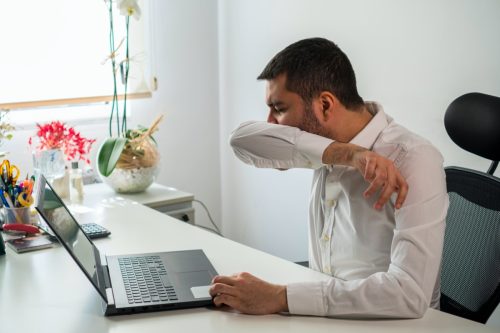
On Jan. 28, I started coughing—a lot. It came out of nowhere and with a feeling of urgency; it felt like I constantly had to clear my throat, and the cough was relentless. Because I'm prone to allergies and because coughing is not commonly associated with breakthrough Omicron infections, I didn't think it was COVID. Per The New York Times, coughing is also far more likely among unvaccinated individuals. And I didn't have any other symptoms: no aches, no fever, no fatigue, no congestion. The weather was funky in advance of a big winter storm due to hit overnight—and sometimes a cough is just a cough.
It's probably worth noting that I had just gotten back from a brief trip the day before. And while I wore a mask on the train to and from my destination, I did have some maskless encounters while I was there. At the time, I remember thinking that was a risk, but also that my chances of contracting COVID from these brief interactions with other unmasked individuals was low. Learn from my mistake: When COVID is circulating at extremely high levels in a community, your chances of getting sick are probably not as low as you think!
RELATED: This Is How Long Your Omicron Symptoms Will Last, Doctors Say.
I got a fever and then tested positive.
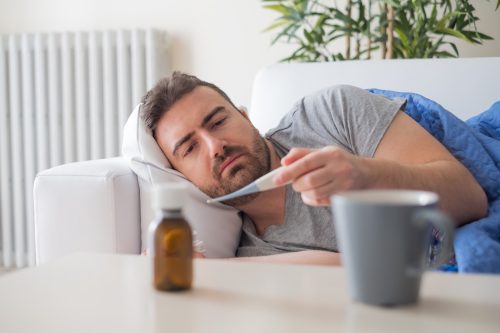
On Jan. 29, my cough had subsided but my throat felt very dry. Sure, that makes sense after a full day of coughing, but a dry, scratchy throat is also one of the tell-tale signs of Omicron. At the same time, I still had no other symptoms—even the cough had subsided—and my throat didn't really hurt. It just felt a little like there was something stuck in it. After I took a rapid test that came back negative, I decided to not worry and enjoy the snow collecting outside my window.
But overnight, I started to feel… off. After two years of not being sick, I'd sort of forgotten that feeling that something is subtly wrong, but by the morning of Jan. 30, I had little doubt that it was COVID. I took my temperature again, and for the first time, I had a fever: 101. Another rapid test revealed that my immune system was, in fact, doing battle with the coronavirus.
But the headache was by far my worst symptom.

Once I had my diagnosis, I felt pretty calm. This was a mild breakthrough infection, and I'd get through it without any real difficulty. But while I was able to keep my fever away with acetaminophen and ibuprofen, my cough came back with a vengeance on that third day of symptoms, and with it, the tickle in my throat gave way to full blown pain. That night, I struggled to fall asleep, and I was suddenly hit with the worst symptom: a headache.
I know what you're thinking—how bad can a headache be? And the answer is really very bad! It's hard to explain exactly what distinguishes an Omicron headache from a normal one, but it really did feel distinctive. There was a tenderness all over, which meant that if I tried to rest my head on a pillow, I felt severe pain. That's why I found myself pacing my apartment at 4 a.m.: My head hurt less if I just stayed in motion with my head upright. Of course, that's not very conducive to sleeping.
According to Prevention, the dreaded Omicron headache is likely a result of the inflammatory reaction of your body fighting off the virus, along with the fact that Omicron targets your upper respiratory system and causes inflammation of the sinuses in particular. That sinus pressure alone can be a major headache trigger.
RELATED: For more COVID content delivered straight to your inbox, sign up for our daily newsletter.
I never experienced the other most common Omicron signs.
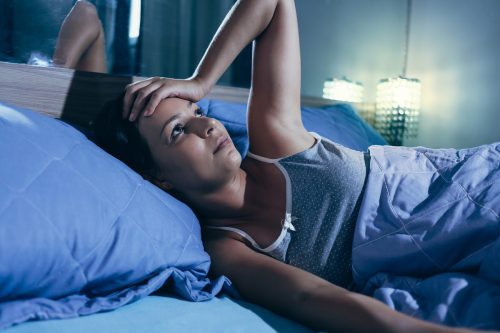
Everyone says that to recover from COVID—or any virus, really—it's important to get a lot of rest. Unfortunately, my cough, sore throat, and that killer headache made sleeping a challenge. And the one major Omicron symptom I never had? Fatigue. Being overwhelmingly tired has been documented as a key sign of an Omicron infection, in both vaccinated and unvaccinated people. It was, in fact, one of the first known symptoms of the COVID variant. Meanwhile, I couldn't even force a nap during the day.
Thankfully, I didn't get body aches or night sweats either, despite those being the other common complaints among vaccinated people who get Omicron. The variant doesn't tend to cause loss of taste and smell or shortness of breath, so I wasn't expecting those symptoms, but I was still very grateful to avoid them. (I spent a couple days with somewhat muted senses, but congestion and cold medicine will do that.)
My symptoms are gone—but I worry the headache will return.
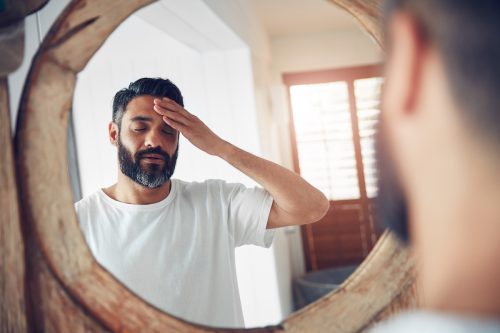
My symptoms started going away after just a few days, and by Feb. 5, I felt almost entirely recovered. Rapid tests continued to show a bold positive line until Feb. 7 (day 10 after symptoms started), at which point the faded line that finally emerged was almost imperceptible. But the headache continues to haunt me, and I keep worrying it's going to leap back to life like a slasher villain. There's still some vague tenderness—sometimes a subtle tingling pain I can feel on the sides of my head, especially at night. I'm convinced that if I make the wrong move, the Omicron headache will hit me with full force.
That hasn't happened yet, but it wouldn't be shocking if it did. In sharing my symptoms on Twitter, I encountered other boosted people who had recovered from an Omicron case and experienced recurring headaches, sometimes weeks after their initial infection. With that in mind, I'm considering myself lucky for my mild case and relatively straightforward recovery—but I'm keeping the OTC pain meds in reach at all times.
RELATED: 5 Signs Your Headache Is Omicron, Doctors Warn.





















